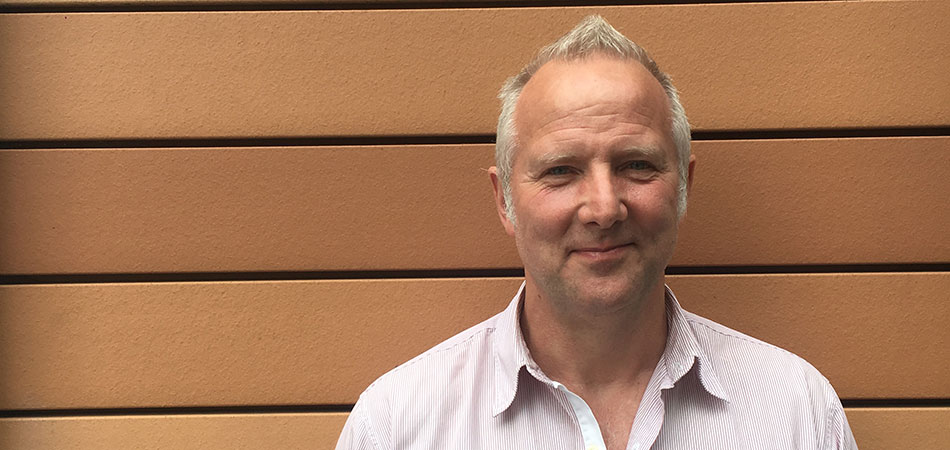
How can brands use music to overcome generational tensions?
Joanna Barnett, Strategy Director at Truant, on the power of music to bring people closer together and broaden a brand’s appeal.
“The PR world is slowly realising that better ideas and better work come out of a specialist environment. And they don't have a history of leading, organising or inspiring specialist talent."


Career to date:
2018, Chief Strategy & Innovation Officer, Ketchum
2012, Managing Director, Strawberry Frog
2005, Global Chief Strategy Officer, Lowe + Partners
2003, EVP, Head of Strategy & Creative Europe, Weber Shandwick
1997, Founder & CEO, purple;patch
1994, Account Director, Burson-Marsteller
Bert Moore: My career can be seen in three chapters. I started off as a junior analyst in a boutique management consultancy, slowly rising to a consultant. I grafted night school at UCL to get a master’s degree in Business & Marketing. This gave me a really good grounding in how businesses actually make money. You never lose that commercial nous.
Chapter two was PR. I was hired by Cohn & Wolfe in the phenomenal era of the 90s when the agency won the Best New, Best Young and Agency of the Year twice. I was at Burson-Marsteller for a short time, following which I set up my own agency, purple;patch. I later joined Weber Shandwick, where I first worked with Jo-ann [Robertson, CEO of Ketchum London].
I spent the last ten years of my career in or running creative advertising agencies. As Global Chief Strategy Officer at Lowe & Partners, I worked alongside some creative firecrackers as we transformed a traditional advertising agency into a contemporary creative culture. The strategic spine, pound for pound, won more EFFIES than any other agency network. That took me to NYC, where I ran Strawberry Frog.
Bert Moore: They have different histories and very different capabilities. You have to look at the clients who buy their services. The clients come out of one of two towers, the tower of marketing or the tower of corporate affairs. These client silos never really collaborated, until now. There are two factors that are changing this. One is technology, because now you cannot uncouple a corporate brand’s reputation from the sales of its branded products. Technology has fuelled transparency. The second factor is purpose. The reason why an organisation exists. This higher order thinking needs to connect with what it makes, sells and does. Therefore, technology and purpose are forcing the agency worlds to come together.
There’s a wonderful conundrum now which is all about talent and how this talent works best together. In my observation, there are two types of talent. You have generalist talent which is really the history of PR agencies. Traditionally, they don’t specialise by function, such as planner, creative, etc. They specialise by target audience, e.g. consumer, investor or government. Advertising’s the other way around. Advertising is an industry built on talent specialisation. A production line to tightly control the quality of a creative product. But the culture of command, control and precision doesn’t work in the modern world. It’s far scrappier than that.
That [advertising] production line, supply chain or process has never been imported into PR. Today, the advertising industry is facing its own looming challenge: its raw materials are out of date. The capabilities of PR people are the raw skills that are required now. They are agile and tactically brilliant. The origins of PR lie in advocacy and influence, and as such, PR experts can deal with multiple stakeholders and they can leap those two towers of marketing and corporate affairs. But the production lines are s***. The PR world is slowly realising that better ideas and better work come out of a specialist environment. And they don’t have a history of leading, organising or inspiring specialist talent.
What we are building here at Ketchum is a consultancy that has the skills, capabilities and culture of a PR firm but knows how to manage and organise specialist talent. I draw my reference points from the PR, creative advertising and technology worlds. Nobody has created a culture of advocacy, influence or multiple stakeholder management with the precision of specialist talent management. And that’s what we’re going to build here. We are structuring this communications consultancy in a way that we think is going to create the best possible participatory ideas for the future.
“The PR world is slowly realising that better ideas and better work come out of a specialist environment. And they don't have a history of leading, organising or inspiring specialist talent."
Bert Moore: We’re not restructuring, just recalibrating. There’s a concept in organisational change called shapeshifting. There’ll be moments where something will be neat and sequential, and then there’ll be moments where things are chaotic. You have to create fission in an organisation because out of that conflict, comes greatness. For instance, with specialist analysts, planners, creatives and technologists on board, the role of account management is going to change. It’ll be absolutely fascinating because their job is to really understand the client’s business and then use their skills and sector expertise to solve that client’s problem. That inherent tension between deep client business knowledge, human insight and cultural dynamics, whoever manages this tension best, will sit on top of the creative agency world for a long time.
Bert Moore: There are hints of the future in a lot of the work. We want to think through big strategic questions where the result isn’t a 30-second hero ad. We have groups of people here who think, plan and create with the security of an advertising process companies are used to. But what comes off the end of the production line is far more relevant to the style of communications they need to speak to different audiences. The work we did on #bloodnormal for Libresse is a good example of that.
Bert Moore: It was for Lowe & Partners. I worked with Jose Miguel Sokoloff & Samper at LoweSSP3 in Bogota for the Ministry of Interior on a campaign targeting the Revolutionary Armed Forces of Colombia (FARC). The campaigns, the Christmas Tree and Rivers of Light, played their role in the subsequent peace process. We cleaned up at Cannes, EFFIES and the Jay Chiat Awards.
“What we have to realise now is that the forces outside of our industry are far greater than the forces inside. The revolution of technology and the revolution of responsibility and purpose are such significant forces."
Bert Moore: You have to respect your competition. My competition isn’t the PR industry though. I’m really intrigued by what Jon Wilkins is doing at Karmarama/Accenture. I’m intrigued by Bukwild, a venture branding agency in San Francisco. If you want to see how agencies work together with beautiful, disparate skills and how conducting is done, look at Scholz & Friends in Germany. They are a machine.
Bert Moore: What we have to realise now is that the forces outside of our industry are far greater than the forces inside. The revolution of technology and the revolution of responsibility and purpose are such significant forces. So, I’m looking at a place in the, quite near, future and thinking how we build an organisation that will surf those forces, so our current and future clients can look to us with even greater confidence. Another force is clients building in-house agencies. Their proximity to the business and the data should produce some leading and effective work. We’ll see.

Bert Moore: Yes, and there is another force that’s far bigger than me and far more precise in its influence in my life. It’s the vision of Barri Rafferty, our global CEO. Barri wants to create a consultancy offer and our London CEO Jo-ann Robertson’s vision is ‘we’re going to do work that matters’. And both of those things are exactly in line with where I see the future. We’re just engineering it now.
Bert Moore: You can’t have enough interests. I’m a committed art collector; it’s my emotional centre of gravity. Being a father of three girls really grounds me. I learn a new sport each year. 2018 is table tennis and I have a brilliant Hungarian coach named Radislav. I organise travel adventures, the next is to Uruguay. Your ecosystem of reading and viewing references should be a daily source of inspiration and challenge. And my mates. I go to the pub and watch footie with my mates. And if I get too big for my boots, they quickly nut me off my pedestal.
Looks like you need to create a Creativebrief account to perform this action.
Create account Sign inLooks like you need to create a Creativebrief account to perform this action.
Create account Sign in